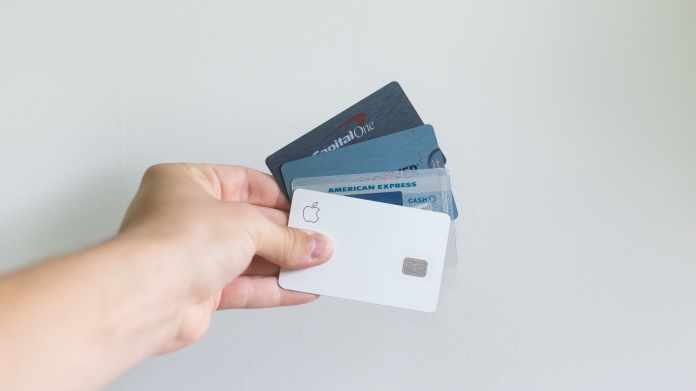Providing incentives for rural practitioners and clinics in the US is essential for ensuring that residents in these areas have access to quality healthcare. Rural areas often have a shortage of healthcare providers, which can lead to poor health outcomes and increased healthcare costs. By offering incentives to practitioners and clinics in these areas, more healthcare providers will be encouraged to work in rural communities, thereby improving access to care for residents.
One of the main reasons why it is important to provide incentives for rural practitioners and clinics is the shortage of healthcare providers in rural areas. According to the National Rural Health Association, 20% of the population are living in rural areas in the US, yet only 9% of physicians practice in these areas. This shortage of healthcare providers leads to longer wait times for appointments and a higher likelihood of residents having to travel long distances to receive care.
This shortage of healthcare providers in rural areas also leads to poorer health outcomes for residents. Studies have shown that people living in rural areas have a higher risk of dying from preventable causes, such as heart disease and stroke, compared to those living in urban areas. This is partly due to the lack of access to preventative care and timely treatment for illnesses. By offering incentives to practitioners and clinics in rural areas, more healthcare providers will be encouraged to work in these communities, thereby improving access to care and reducing preventable deaths.
Another reason why it is important to provide incentives for rural practitioners and clinics is the high cost of healthcare in rural areas. When there is a shortage of healthcare providers, the ones that are available can charge higher fees, as they know that people have limited options for care. Additionally, residents in rural areas often have to travel long distances to receive care, which can add to the cost of healthcare. By offering incentives to practitioners and clinics in rural areas, more healthcare providers will be encouraged to work in these communities, which will increase competition and lead to lower healthcare costs for residents.
Barriers
There is also a barrier in the distance that has to be traveled to get care from rural areas. Not only can this be a huge amount of time that people may not be willing to spend, but there is also a lack of transportation in many areas, leaving those needing care without access to it. In the case of elderly patients who need frequent care appointments, it may be overwhelming for family members to travel constantly to and from appointments.
Distance also plays a role in the willingness to receive care. Someone working an hourly job may not be able to take the time to drive long distances to an appointment and pay their bills, so they opt not to go. Overall, the access to care may be too far away for people to go unless in dire need.
In rural communities without access to the same level of care of larger populated cities, there may also be knowledge gaps in the communities. The community may not be as aware of the need for regular care or not know the signs to look out for with common illnesses. The people impacted here are simply not aware of factors regarding health that most people would consider common knowledge.
There is also a lack of high-speed internet in rural areas. Without that, there is no opportunity to bring virtual or remote visits to the populations. While this would not solve all the problems with access to care, it would dramatically improve the situation.
There is a lack of health insurance in rural areas. Information obtained from Rural Health Info shows that the largest population of uninsured citizens is in nonmetropolitan areas – children ages 0 to 17 at a rate of 5.5% and adults from ages 18 to 64 at a rate of 14.4%.
According to Rural Health Info, in rural areas, as there is little anonymity, social stigma and privacy concerns are more likely to serve as barriers to healthcare access. Residents in rural areas may have concerns about seeking healthcare for mental health, substance use, pregnancy, sexual health, or even common chronic illnesses because of unease or concerns about privacy. The patients’ feelings may be the result of a personal relationship with their healthcare provider or others at the facility. Patients may also have concerns about friends, family members or work colleagues, who may notice them using services for health issues that are not typically discussed openly, such as HIV testing or counseling.
Lastly, there is a lack of clinics in these areas, which means that for a practitioner to go there, they would need to set up a practice. This financial burden is not always something that people can take on.
Regardless of the reason, access to healthcare in rural areas is a challenge. This challenge impacts the community in many ways, and providing access would improve the lives of those community members. The struggle is to find the right incentives to draw care to these areas that is continuous and will aid in supporting them, while also benefiting the practitioners.
Incentives
Incentives for rural practitioners and clinics can take several forms, such as financial assistance for student loan repayment, tax credits for practitioners and clinics, and grants for equipment and facilities. These incentives can make it more financially attractive for practitioners and clinics to work in rural areas and help to offset the additional expenses associated with providing care in these communities.
One such incentive that could be offered is financial support with student loans. Tuition assistance, forgiveness, scholarships, or grants would all benefit new practitioners to help them get out of debt. This incentive would be tied to requirements to practice in rural areas for a set amount of time. In doing so, the practitioner would be locked into the rural area and provide care for underserved patients for a minimum of the set amount of time.
The rural areas would need assistance to provide this incentive though, which could make it unlikely to happen without government support. The other option would be for hospitals or other large care providers to provide this assistance, which would support clinics that are further out than their main ones.
This may prove less effective at bringing practitioners to rural areas than previously thought, however. There are already incentives in 43 states and Washington, DC, and there is still a primary care gap in many rural areas. The question is why?
It may be due to a lack of knowledge about the programs, which is something that should be more effectively communicated. Another reason is the lack of primary care providers. As many articles state, there is a higher demand for care than there are students going into college programs for them. Incentives may improve that number, but would need to be clearly and effectively communicated early so that students can make decisions about higher education.
If this information is only communicated after the student is in medical school, it does not drive new students to the programs, which is a high need. To serve more rural communities, there is a need for more practitioners in general, not just to persuade the ones already practicing to change their location.
It should also be noted that the terms for using these programs vary from place to place. In some cases, the terms, coupled with low pay, act as deterrents rather than incentives. In rare cases, the balance works out to less pay overall, even when coupled with student loan payments, due to the low pay in the rural area.
However, as an act of balance between the positives and negatives, those who utilize these incentive programs tend to stay in the area for longer. This means long-term access to healthcare for the rural areas, so it does help – just not as widely as expected.
Another issue is noted in a study by the Center for Health Workforce Studies at the University of Washington. According to the study, “reported barriers to allied health professional recruitment and retention in rural and underserved areas included non-competitive salaries, lack of benefits and professional support, poor fit with rural community culture, burnout, and lack of rural community infrastructure or amenities.” This confirms that there are other concerns to practitioners outside of student debt.
This information could mean that there is a gap in incentivizing practitioners who are not new graduates. This could be a missed opportunity to bring care to rural areas. Practitioners who have been practicing for a while could be looking to move, perhaps out of a city to a more rural location, for any of a number of reasons, and not including this group in the scope of incentives would be a major downfall.
There are incentives that do exist for setting up practices in rural areas targeted at physicians, which does leave out other primary care providers such as family nurse practitioners. However, these incentives are currently only available in a few states, and are largely tax related without an immediate benefit to practitioners.
While tax benefits do provide support and incentive, many people would prefer something more tangible. Some of the incentives provided by states are provided below, according to a Report of the Council on Medical Education:
- Georgia provides a $5,000 income tax credit for physicians in rural areas.
- Montana provides a tax credit for four years from the time that the physician begins practice in a rural area (with a payback requirement if the physician stops practicing in the rural area within four years of the taxable year).
- Louisiana allows a tax credit of a maximum of $5,000 per taxable year (for a maximum of five years) for physicians practicing in small communities. There is a payback provision if the physician leaves the rural practice before a specified time.
- Oregon grants $5,000 in personal income tax credits to physicians practicing in rural areas or associated with specific categories of rural hospitals.
There are also other incentives such as the Rural Physicians Relief Act of 2007, which provides tax credits for any physician who provides care in a frontier area (which would encompass the rural areas outlined here) on a monthly basis. The practitioner need not be directly located in the frontier area, but could serve a majority of patients from that area instead. This would benefit rural communities but still would mean a likely lengthy drive for access to care.
Medicare also provides a benefit wherein payments are not reduced due to location in rural areas. This is a marginal incentive of only 2% to 5%, which has a low impact on overall service value. Despite the program’s long run, no changes have been made to improve this incentive, and many practitioners do not place a high value on it.
As far back as 2005, the Medicare incentive was noted in a study as being less than effective and not drawing practitioners to rural areas. An overhaul and thorough rework of the program may improve its overall effectiveness.
Improving infrastructure could go a long way toward incentivizing practitioners to move to rural areas. For example, improved access to the internet would improve the communities and be a project run by the state or city governments. Many rural areas rely on satellite internet, which can be unreliable and charges per data used. With practitioners needing to relocate to these areas, some thought would need to go into improving the area for them, and access to fast and reliable internet that doesn’t cost a lot should be made a priority.
Another drawback to the incentives is if not enough practitioners take advantage of them, it could leave those who do being overwhelmed. Areas that have not had reliable access to healthcare will fill up a practice rather quickly, and the practitioner may end up turning patients away to other facilities or booking months or more out. This could be balanced through improved incentives drawing more appeal to practitioners.
Addressing the need for more clinics and practices would also incentivize practitioners to come to these areas. If the local governments helped fund startup clinics, it may help people who want to start one but are unable. Another option would be for the clinic to be owned by the local government and staffed by those practitioners who do not need to handle the day-to-day running of a practice. Not everyone has a goal of starting their own practice, but both of these options would help to draw practitioners to the area.
One last incentive would be to draw nurse practitioners rather than physicians to these areas. Family nurse practitioners are able to provide a similar level of care to patients and would fill in the gaps for less cost in salary.
If other incentives were provided to family nurse practitioners, the cost could be reduced. Taking student loans as an example, the cost of becoming a physician is twice that, or more, of a family nurse practitioner. Also, lower costs for the nurse practitioner could be passed down to the patient, reducing the overall cost spent for them, thereby breaking that barrier. Nurse practitioners in underserved communities could be a large part of the solution.
Conclusion
Providing incentives for rural practitioners and clinics in the US is essential for ensuring that residents in these areas have access to quality healthcare. By offering incentives, more healthcare providers will be encouraged to work in rural communities, thereby improving access to care and reducing preventable deaths, and lowering healthcare costs for residents. It is a win-win situation for both the healthcare providers and the residents living in rural areas.
The goal is to achieve the right level of incentives for practitioners to relocate to those rural areas, benefiting both them and the community.
The need is huge with lots of gaps to be filled by practitioners in many areas across the US. The right level of support for everyone involved is a delicate balance, but there are many proposed solutions. It may come down to a combination of incentives, rather than just one, to improve overall access to healthcare in rural areas.






















